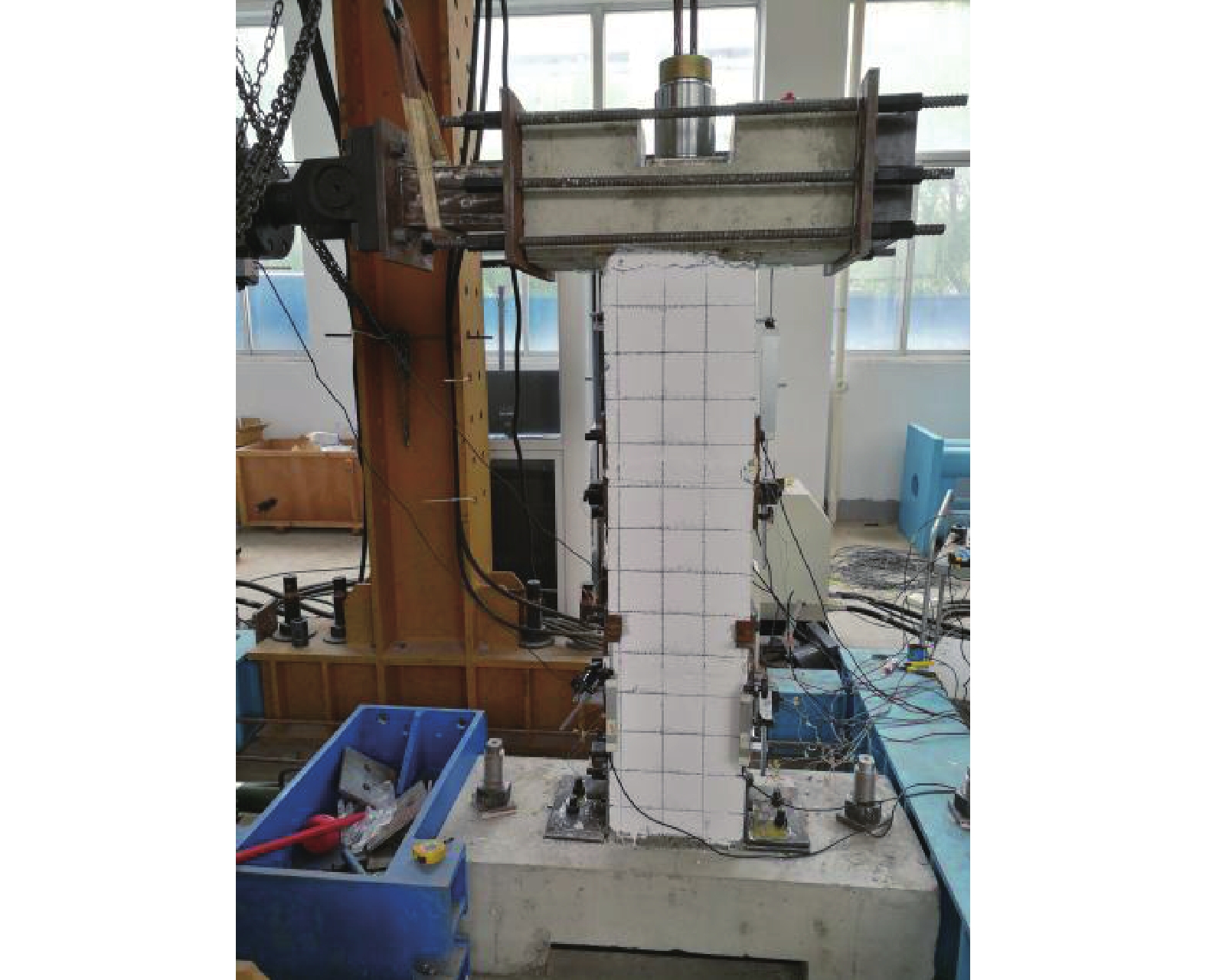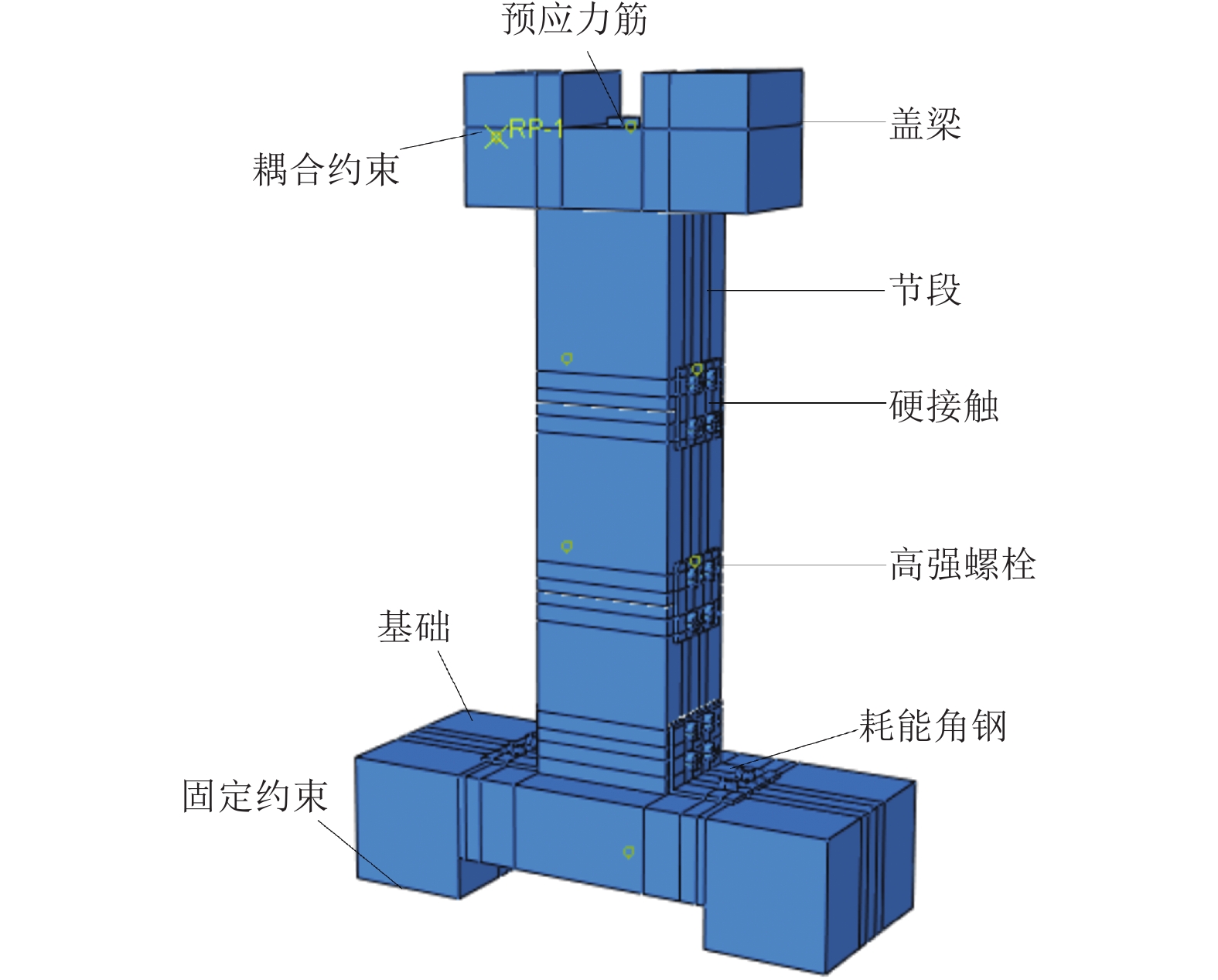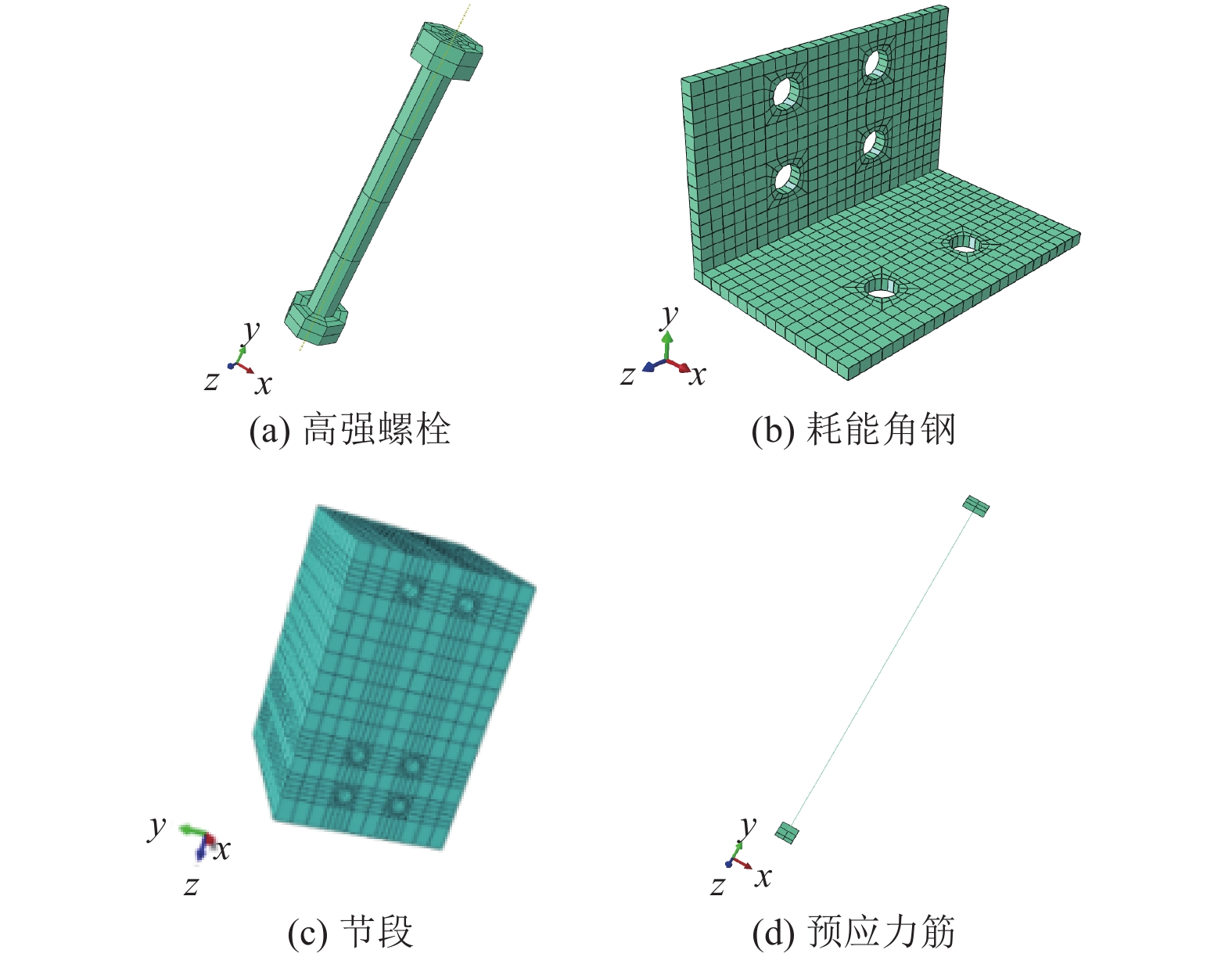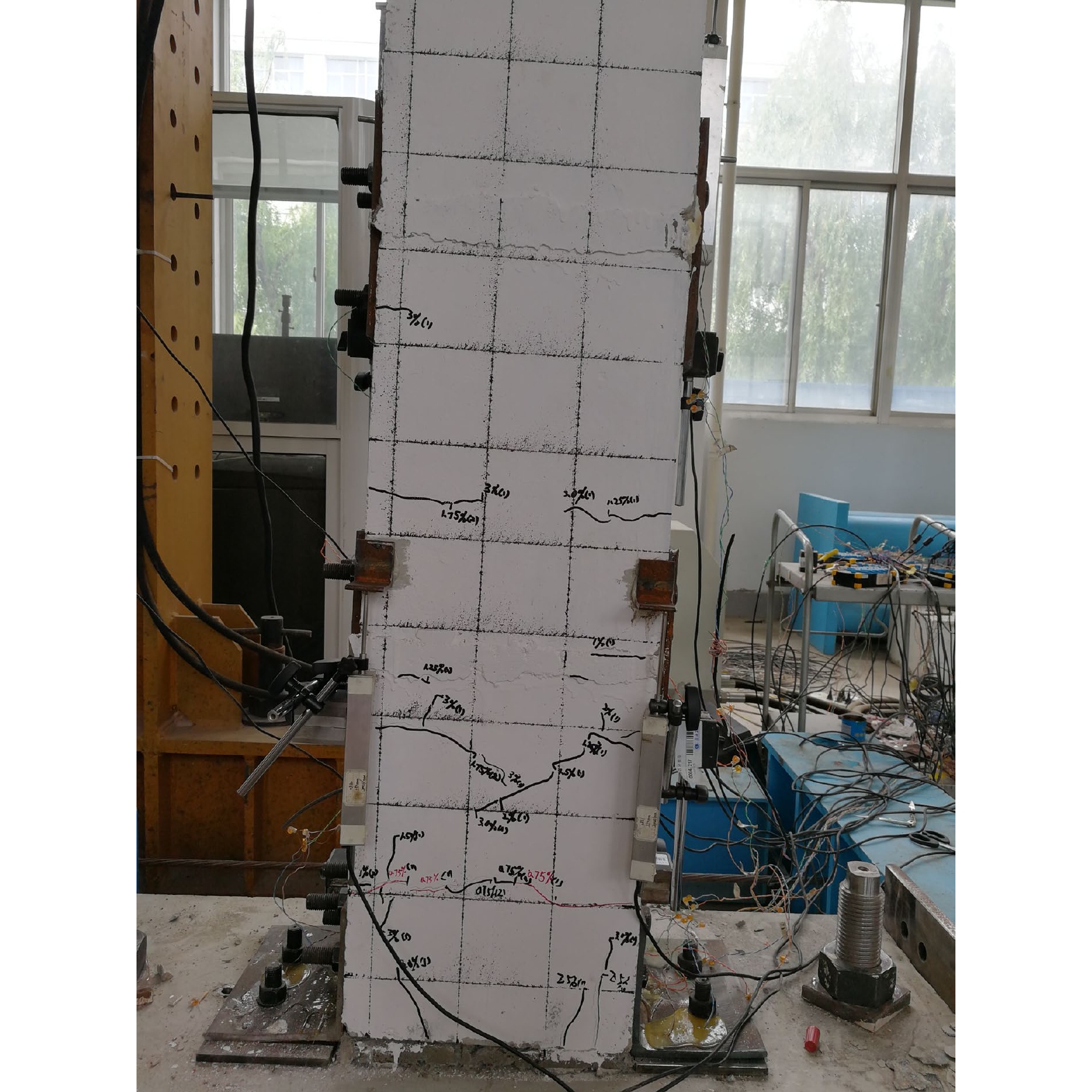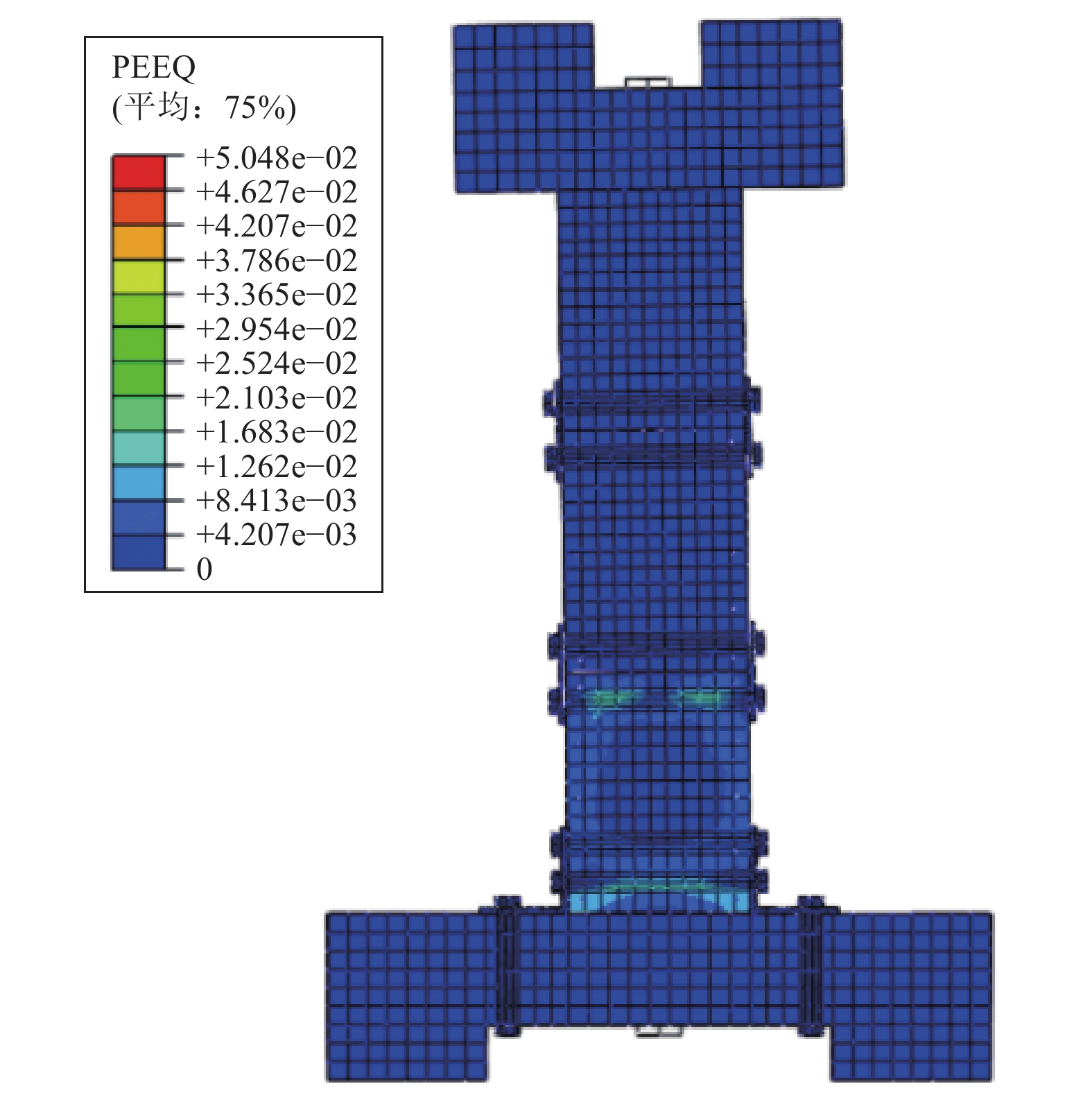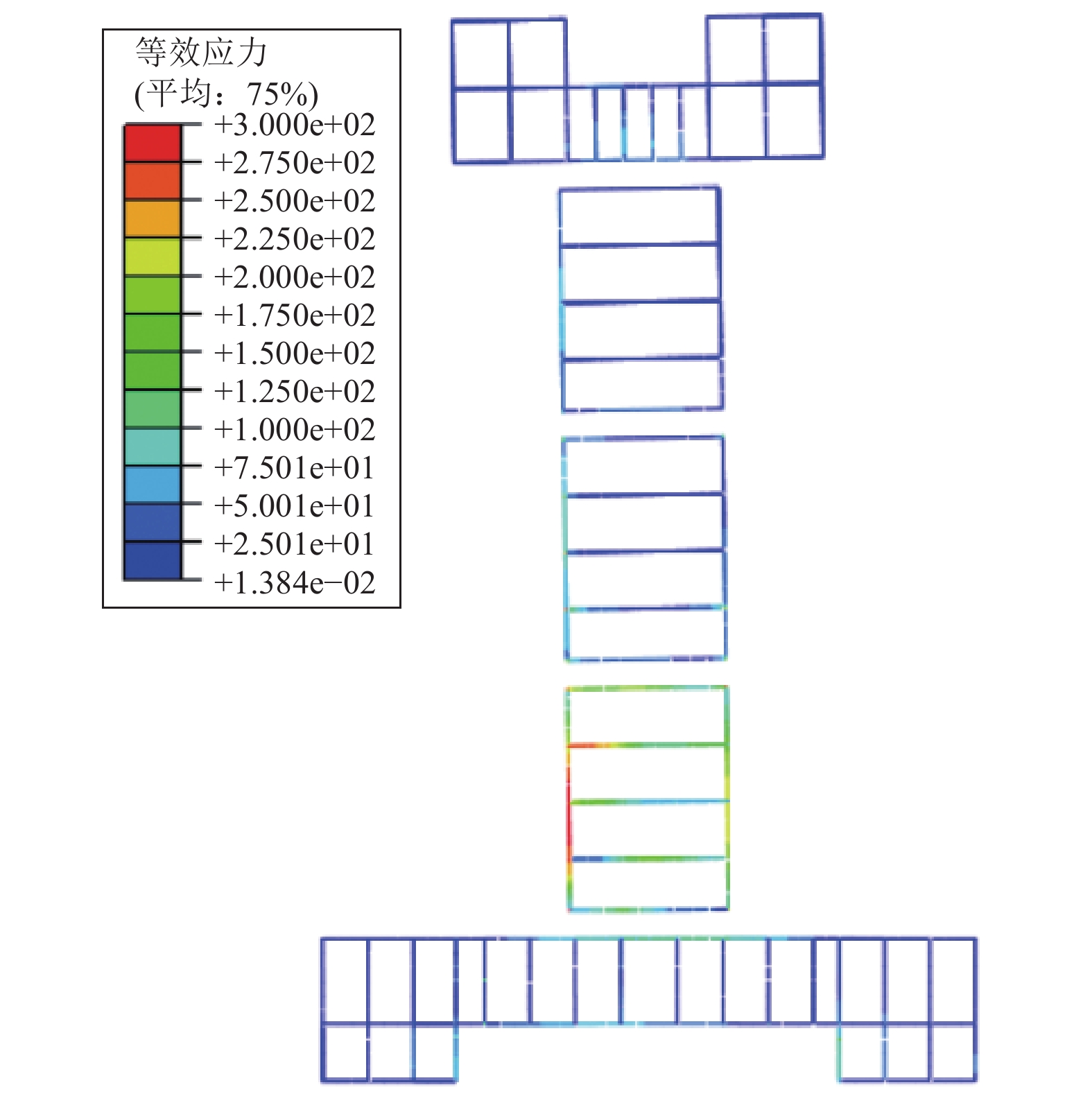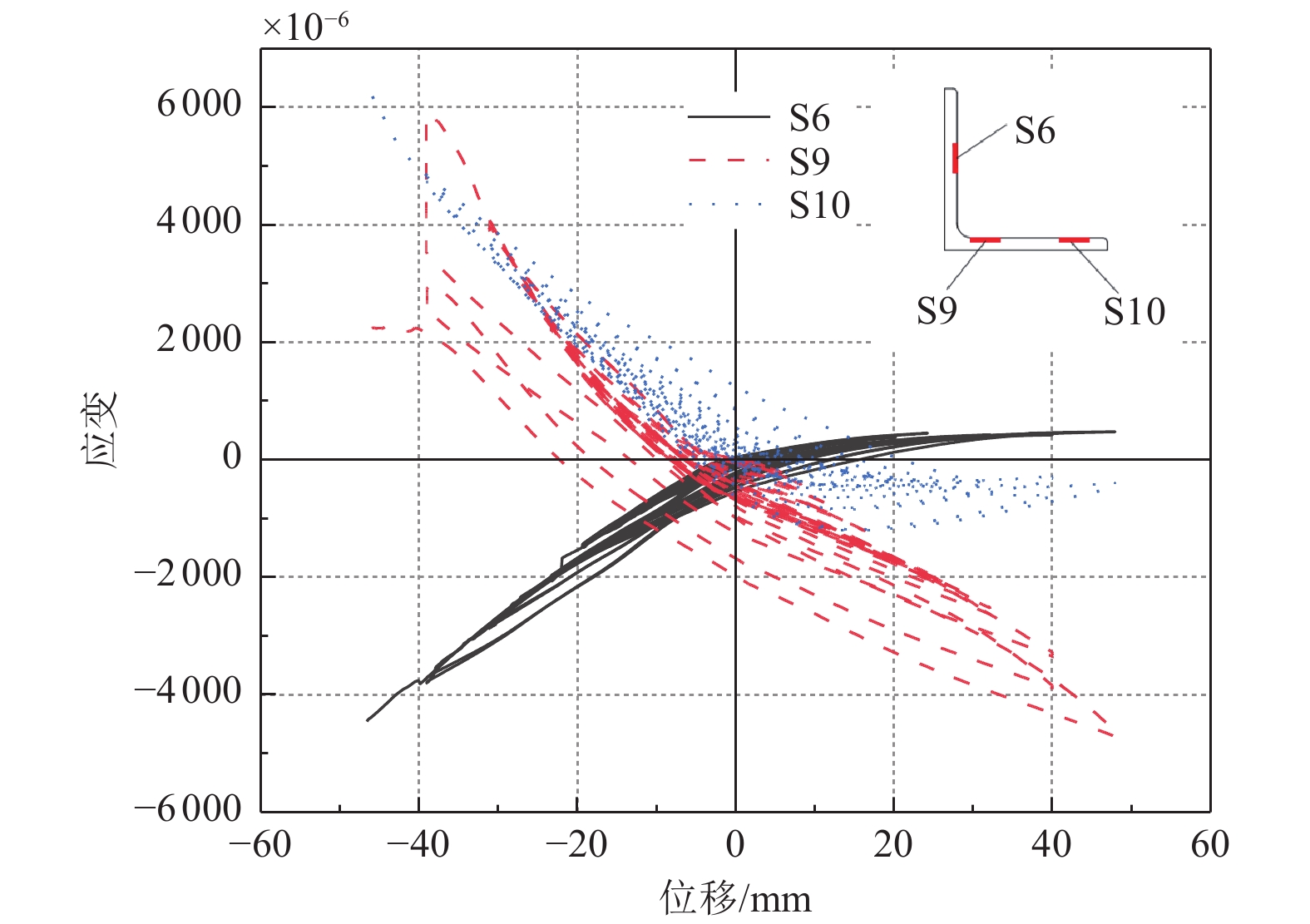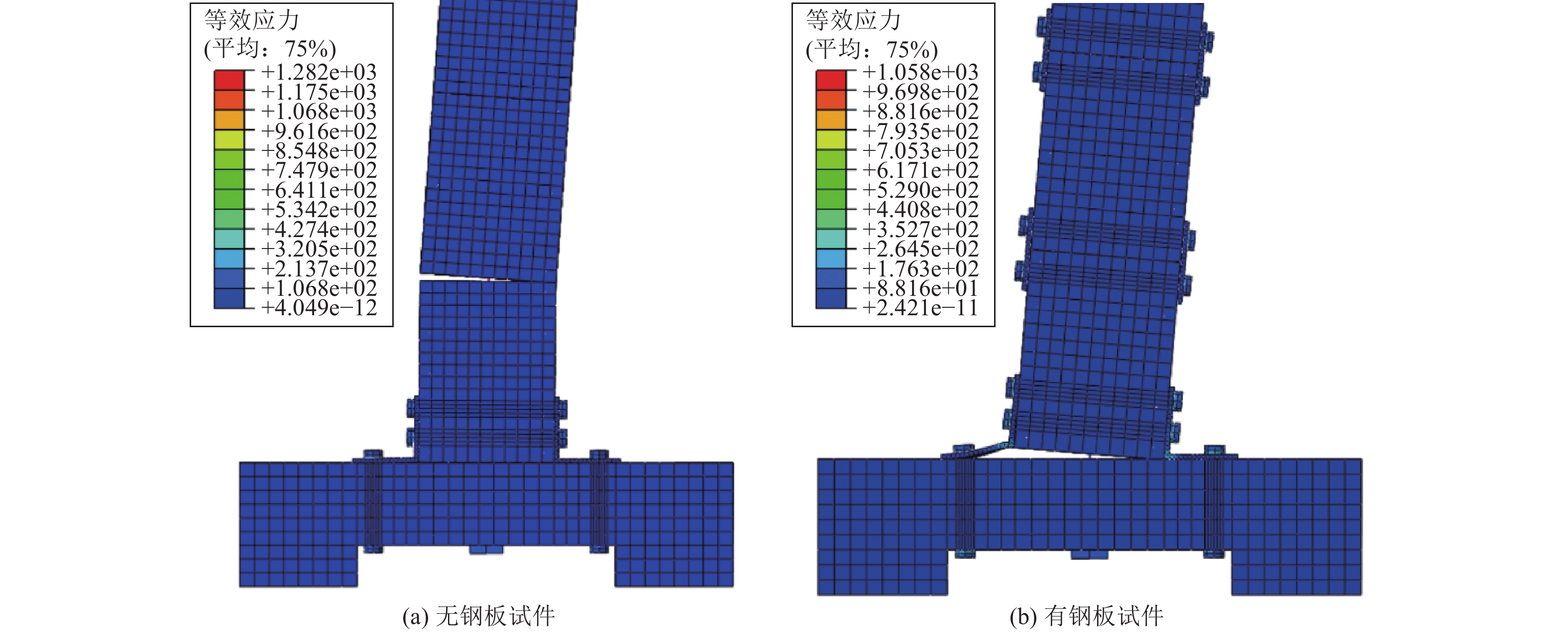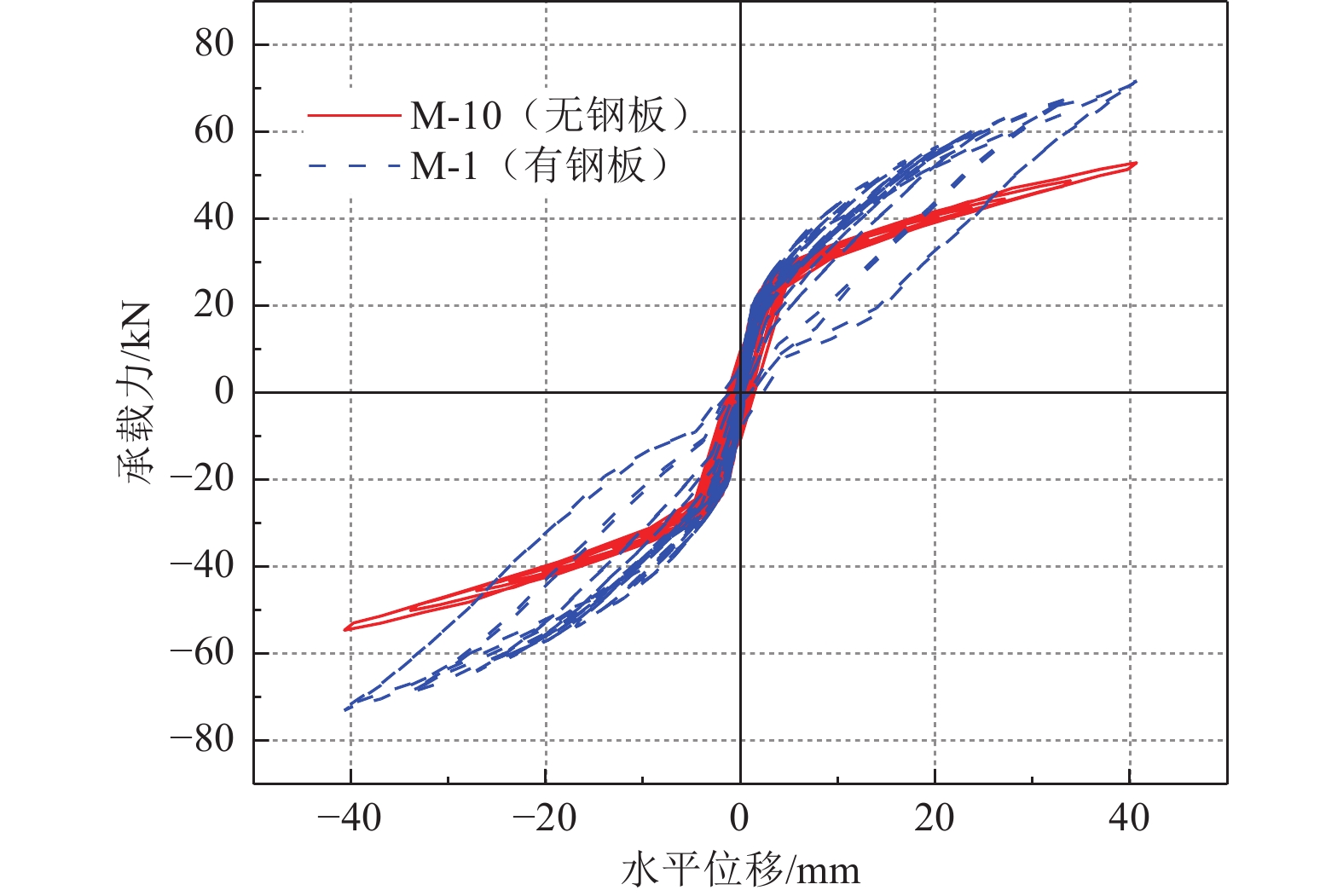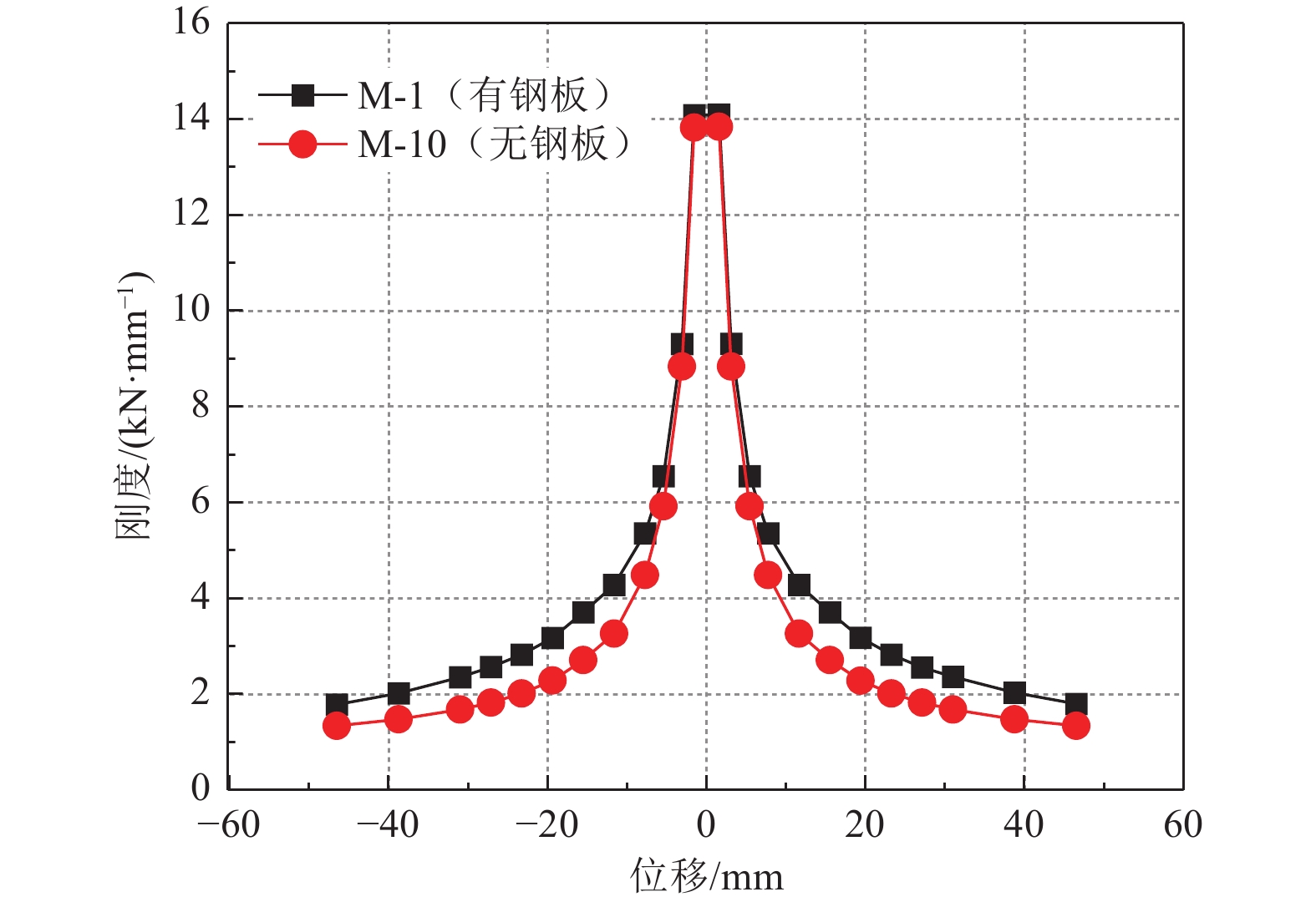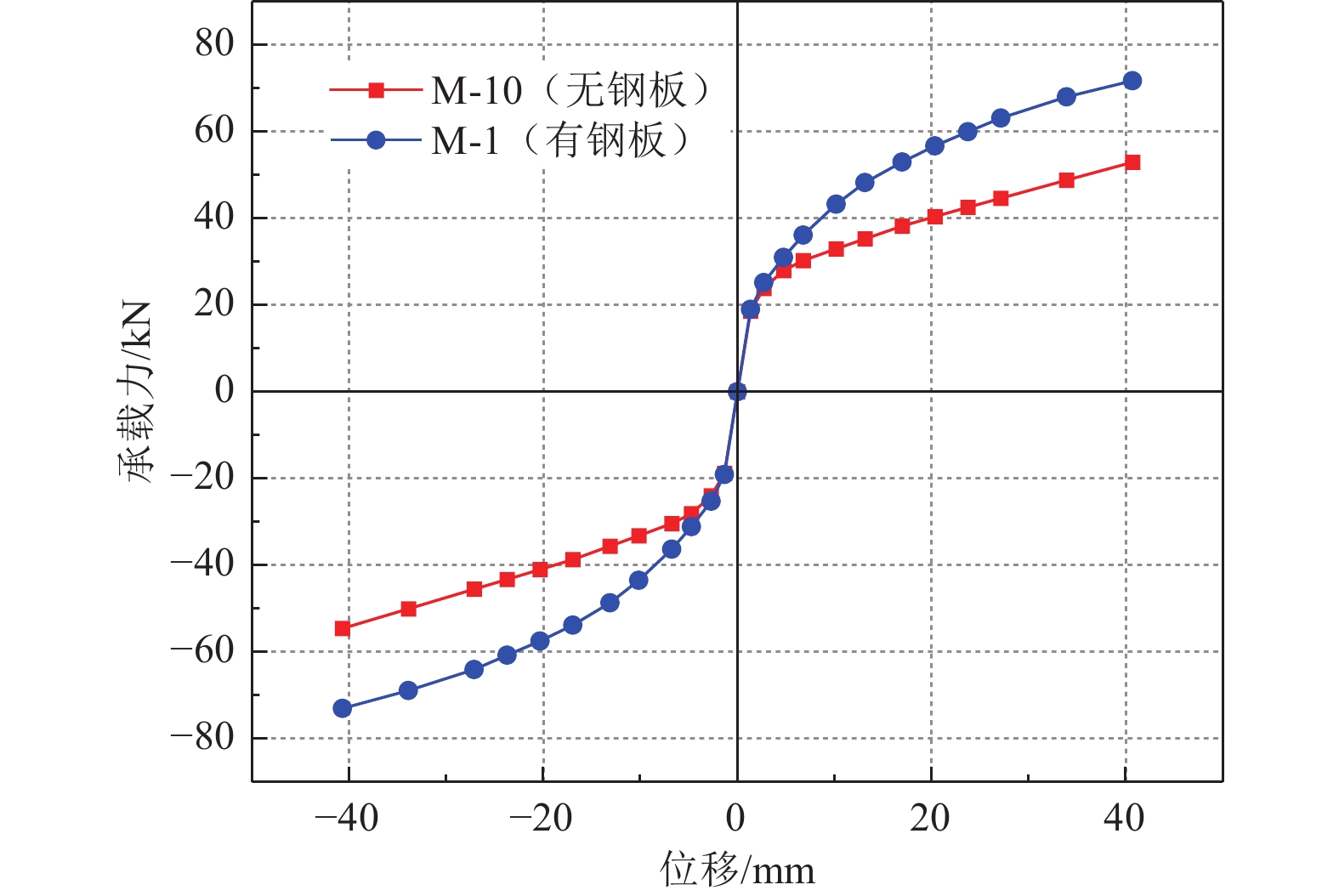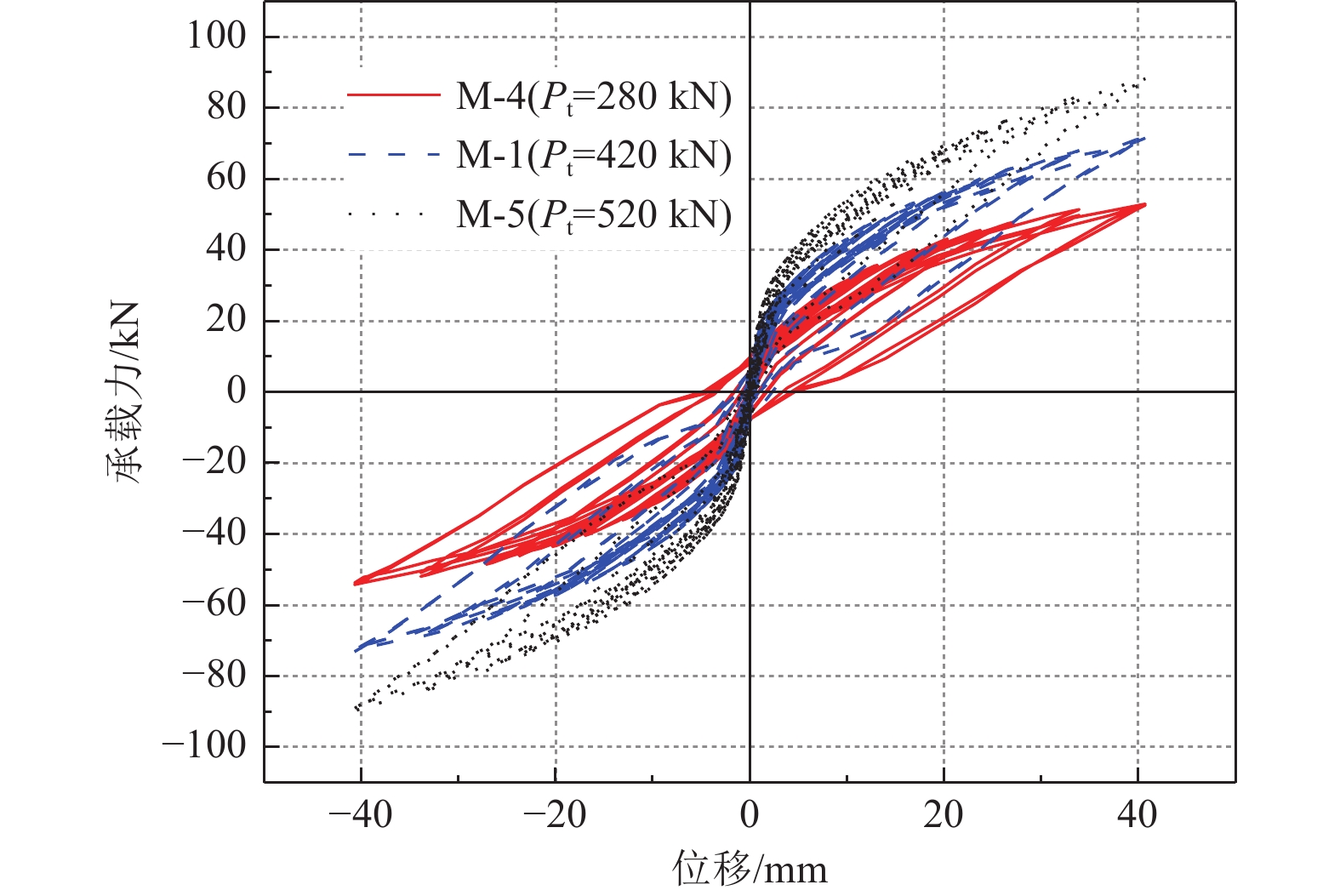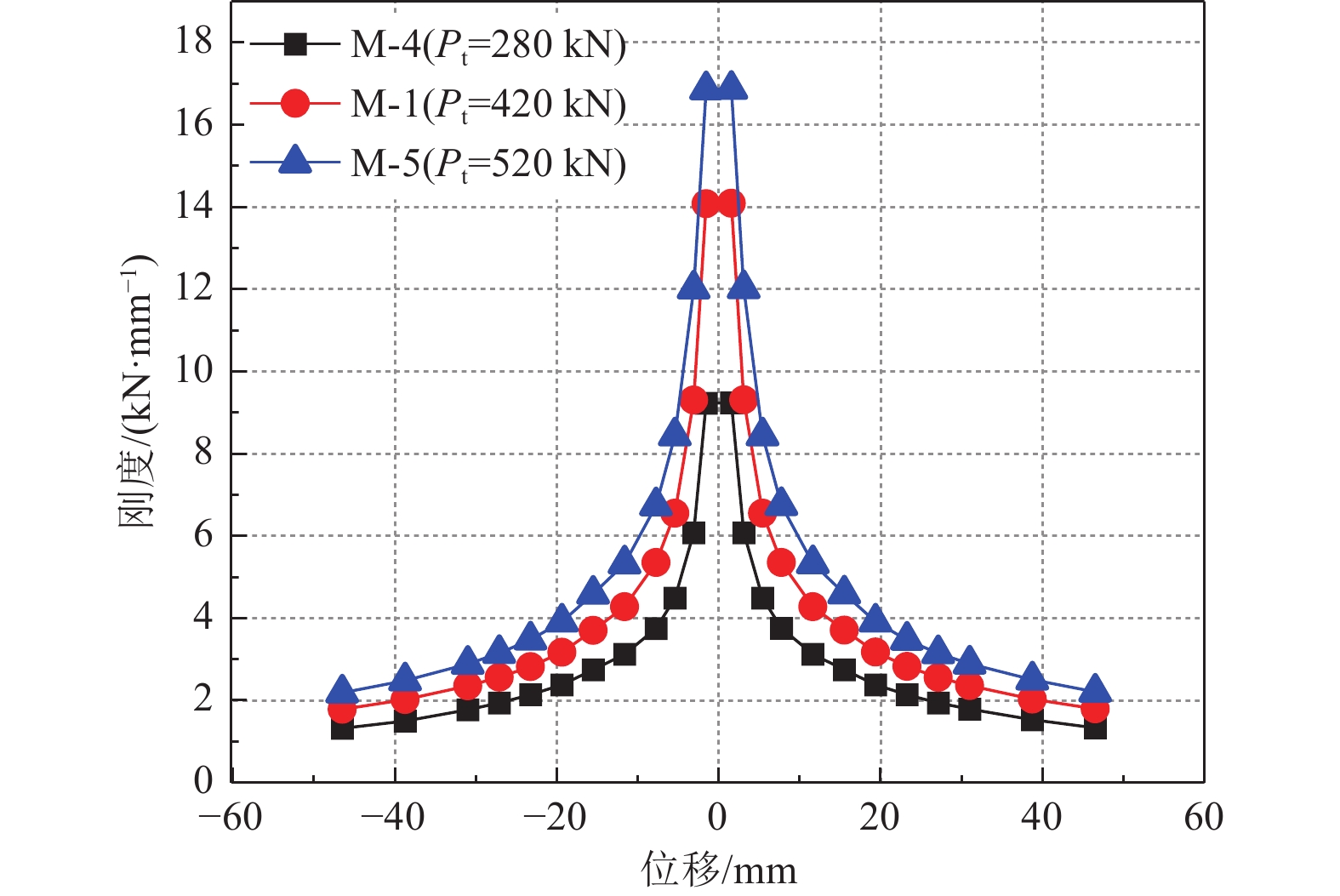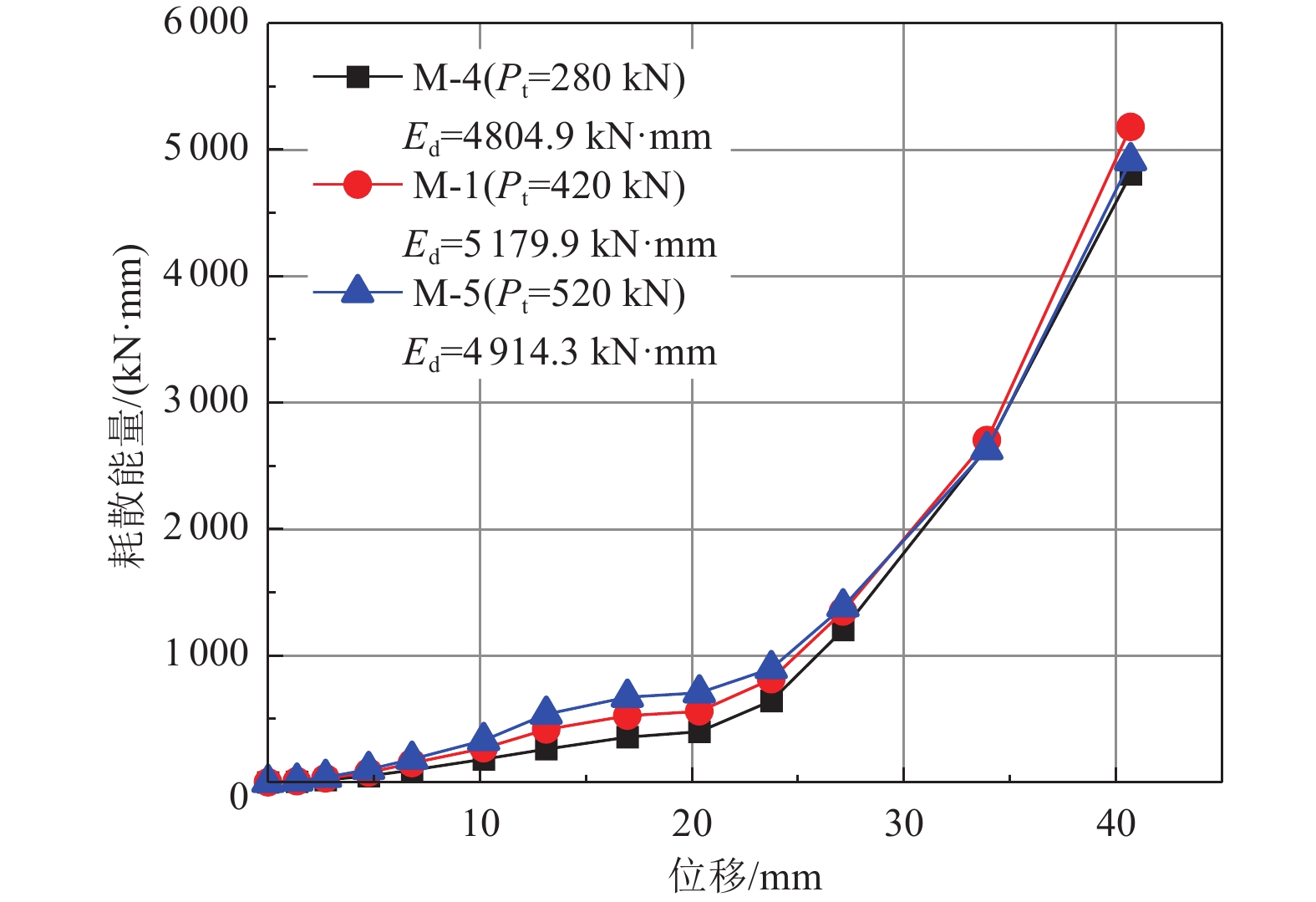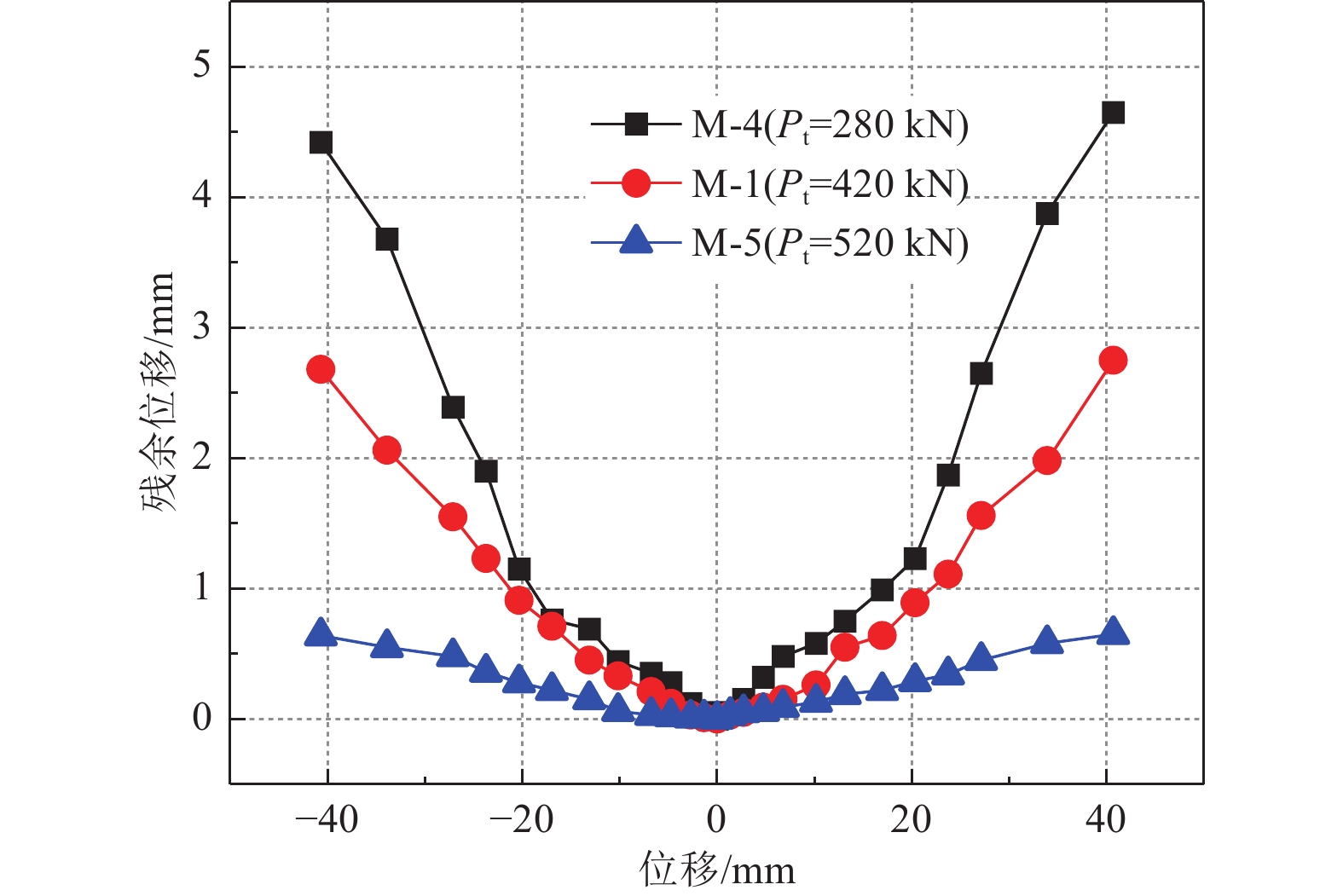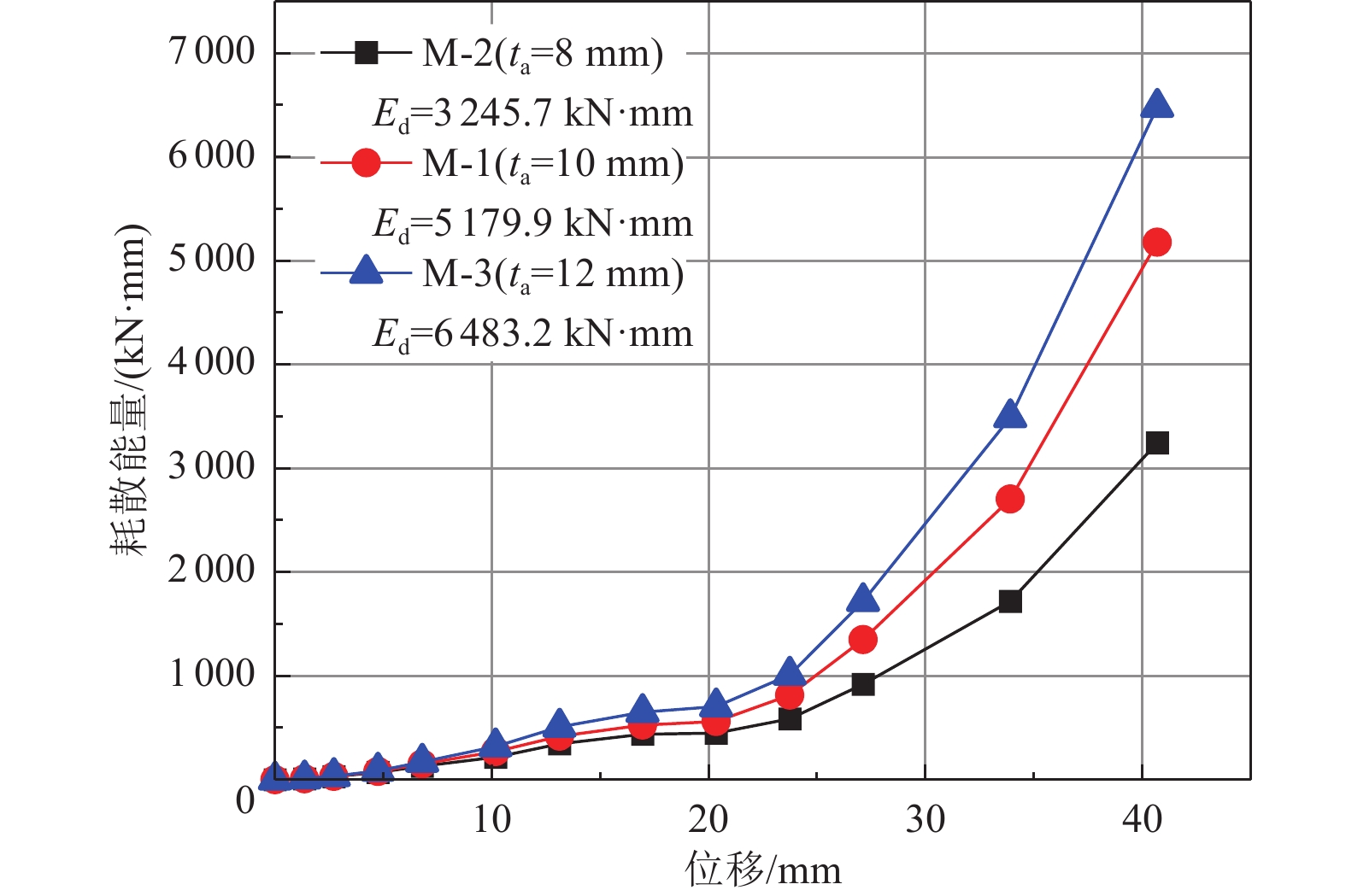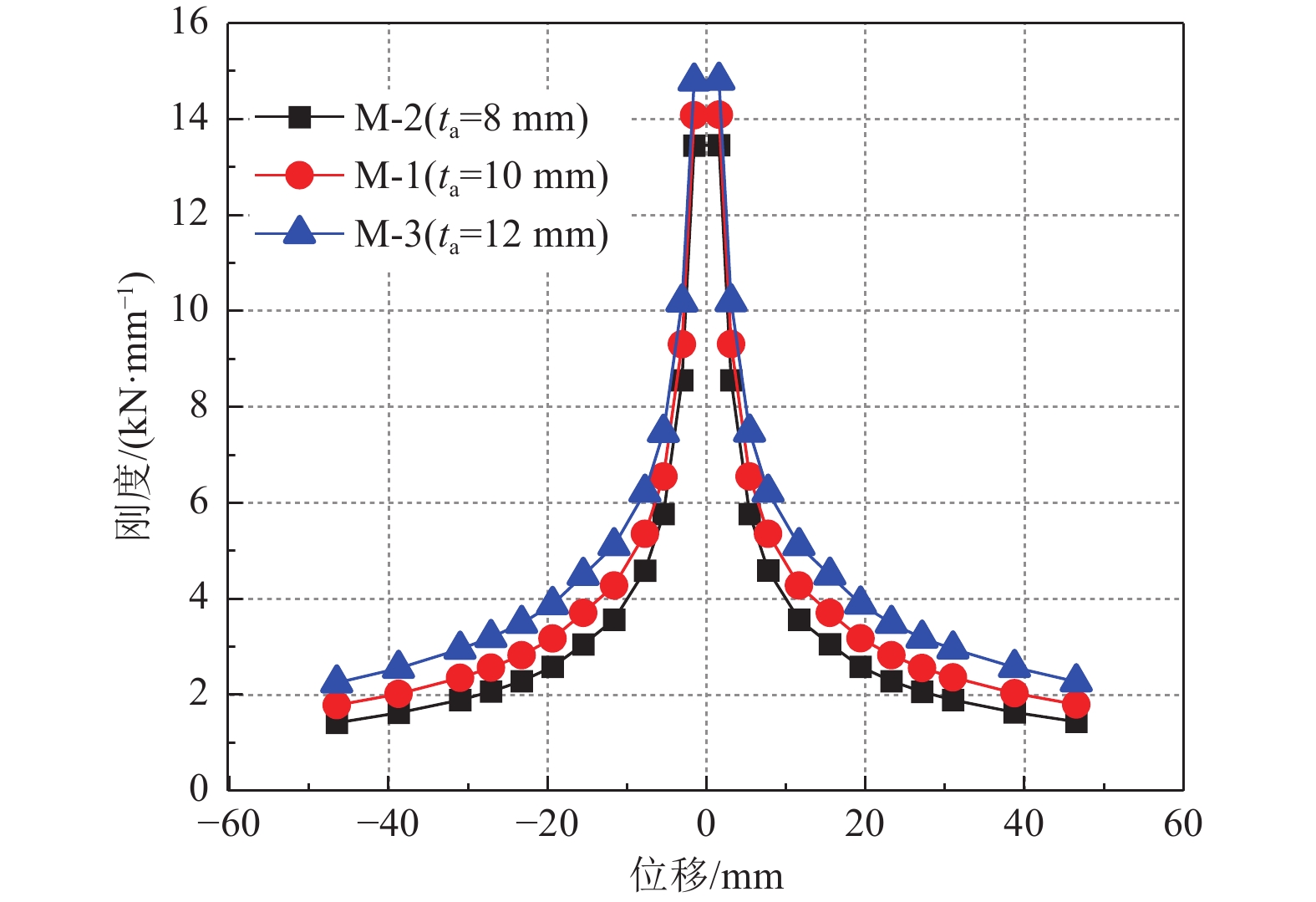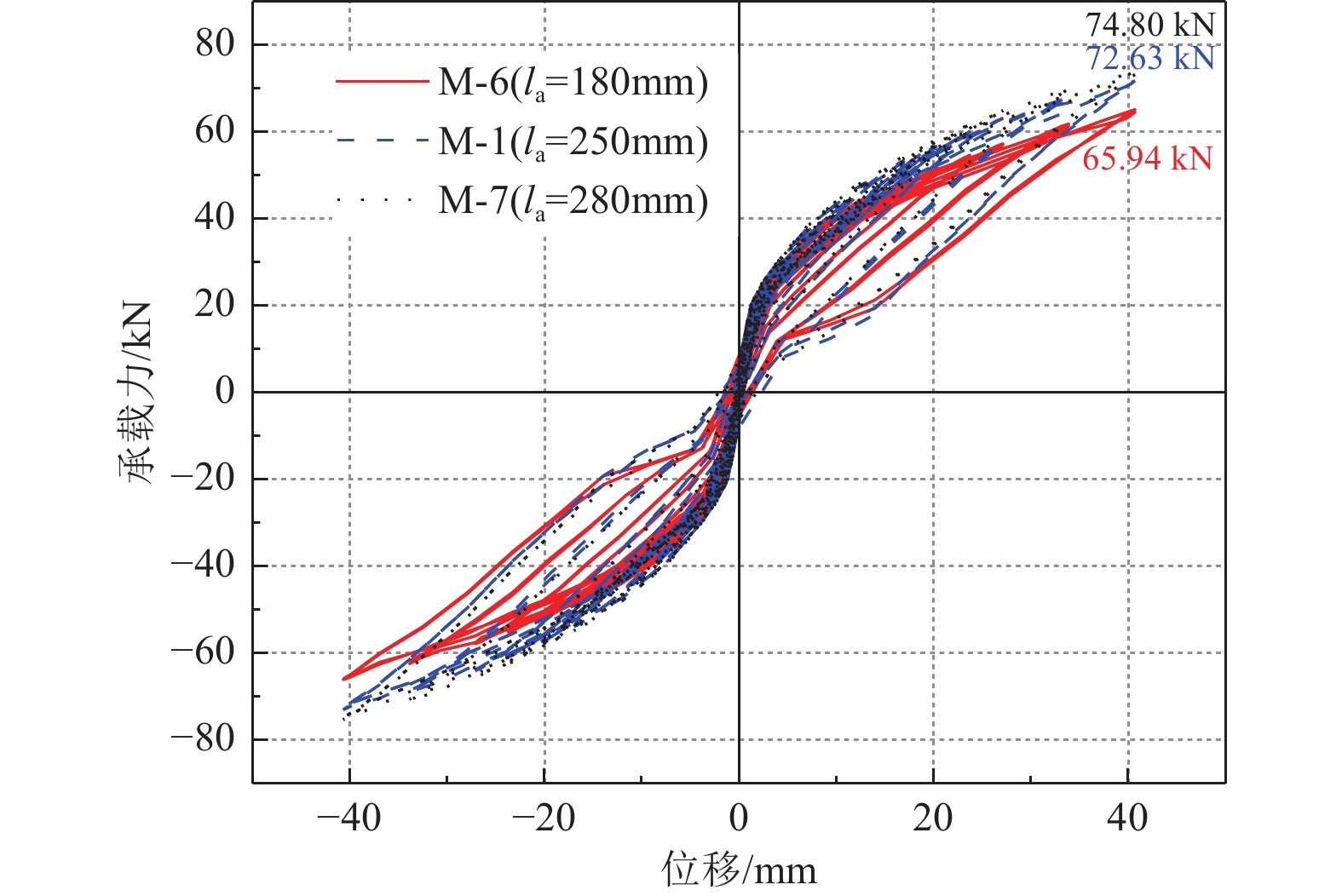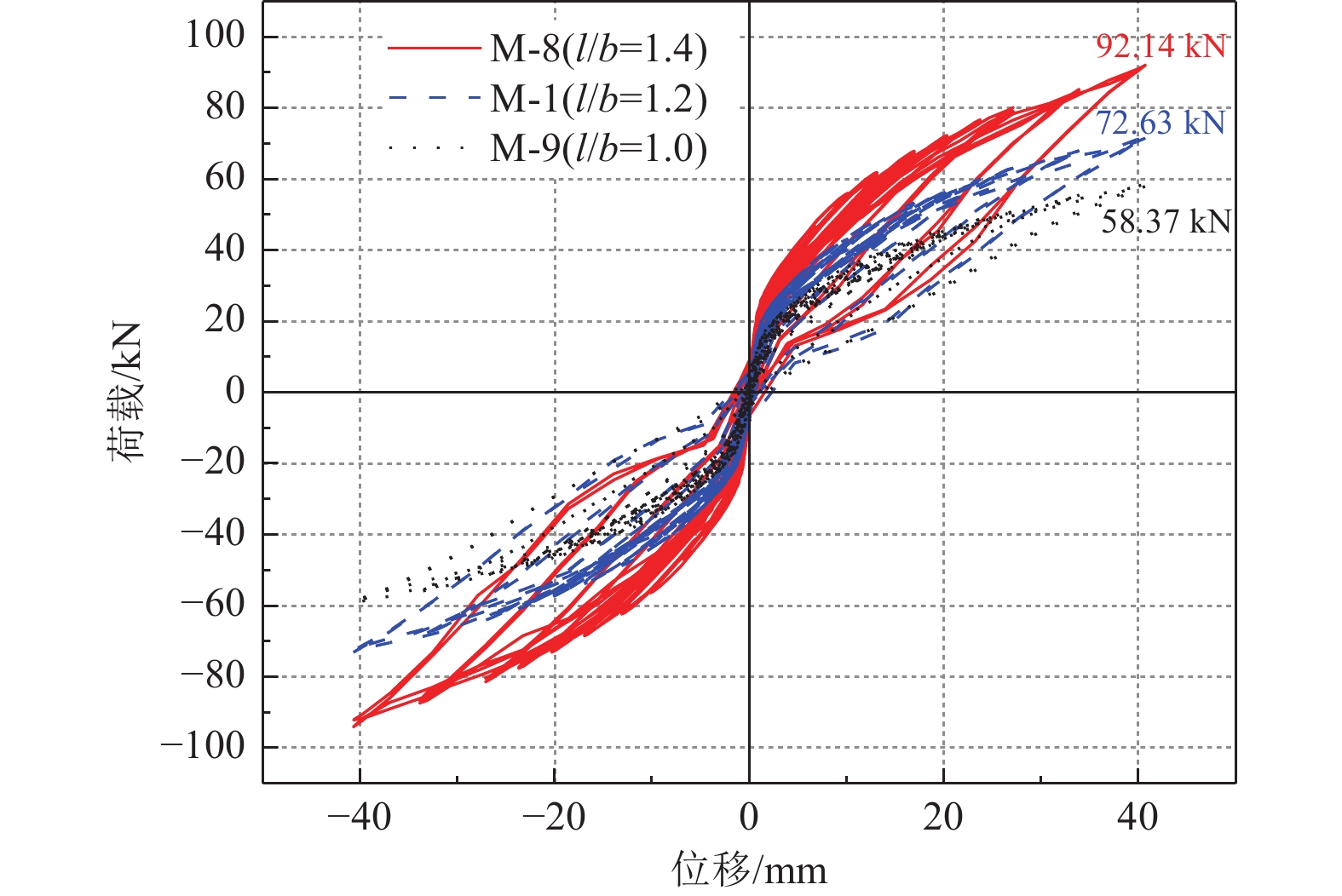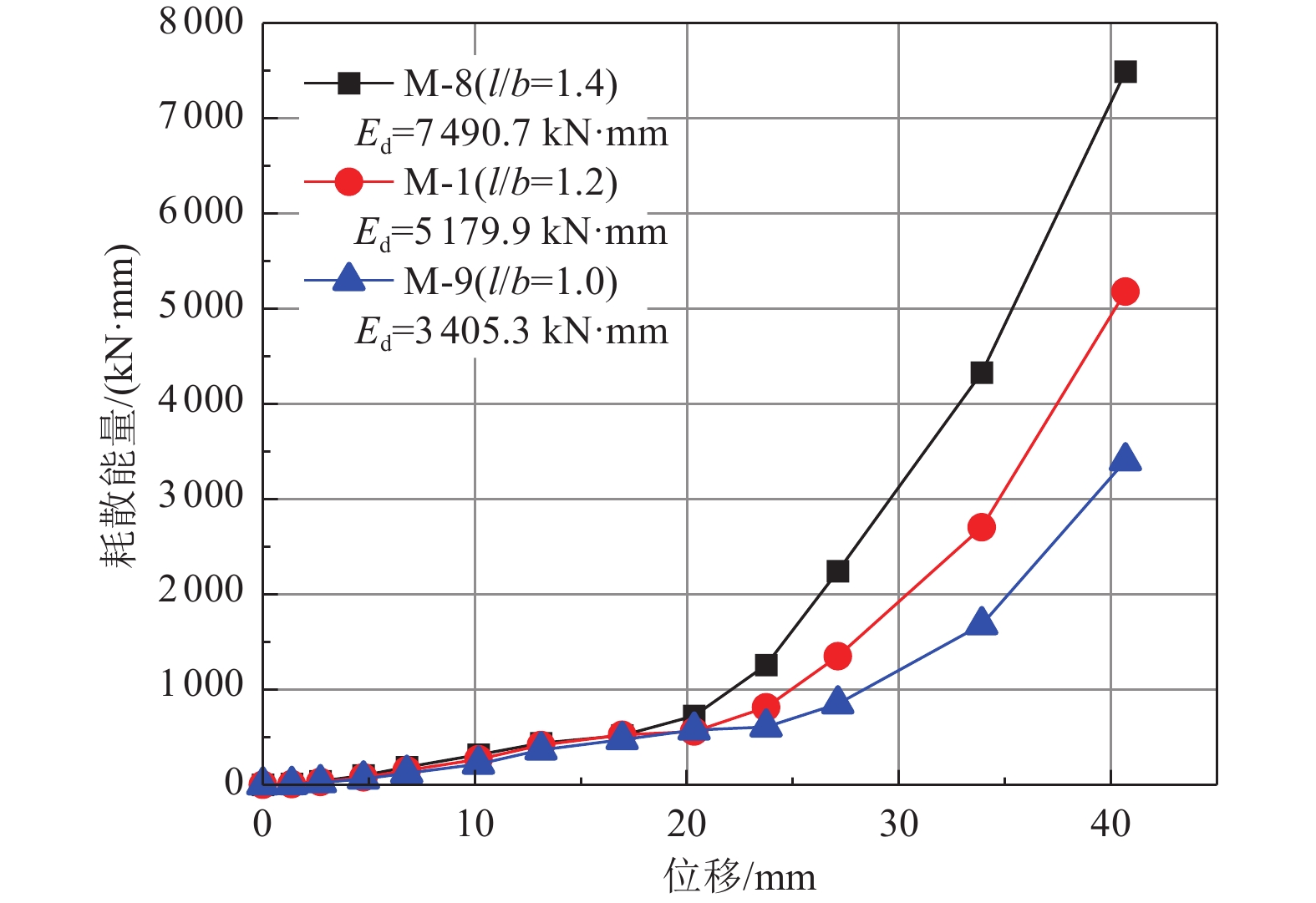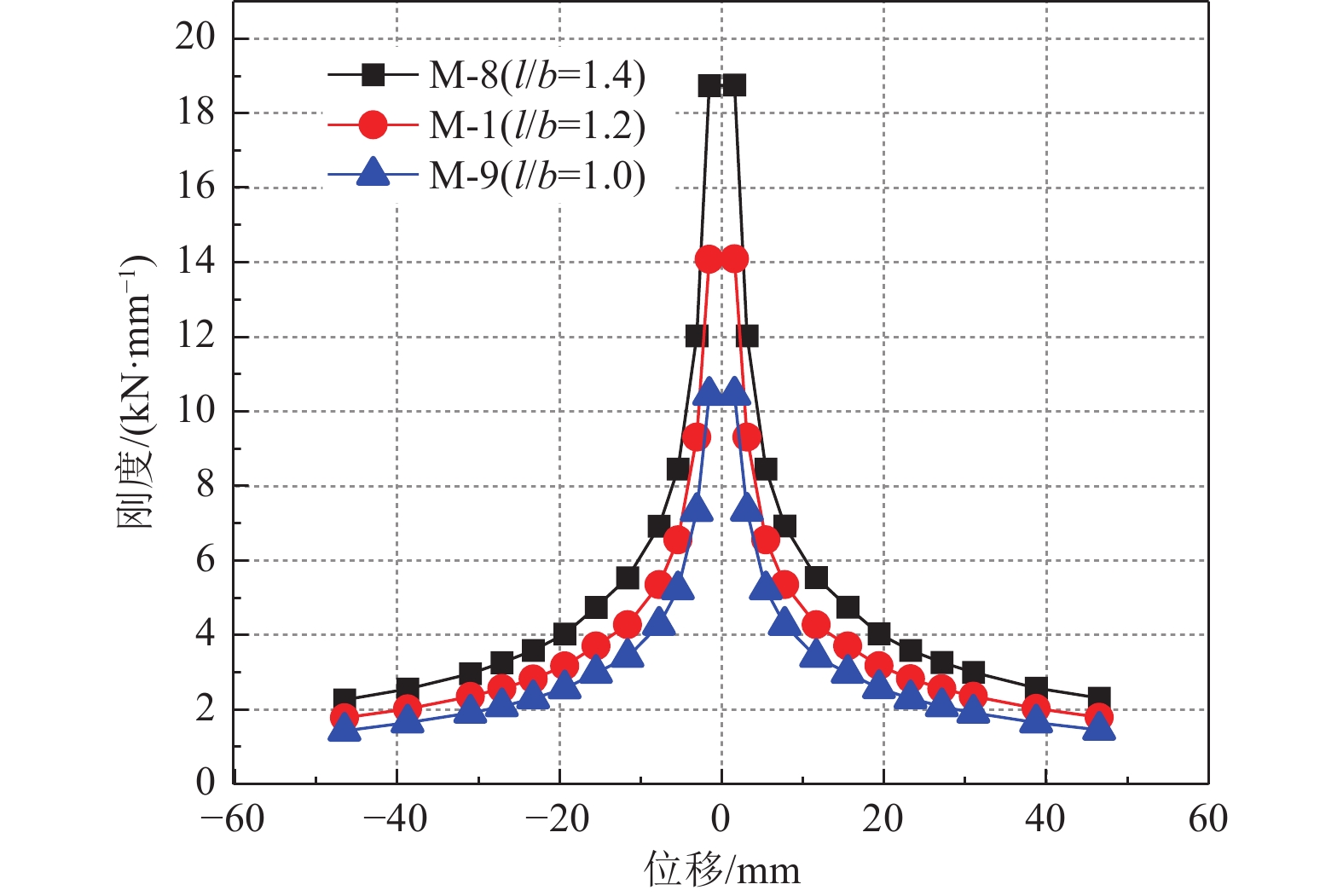Numerical Analysis of Seismic Performance of Self-resetting Bridge Piers Based on Angle Steel as Energy Dissipation Component
-
摘要: 本文提出以角钢作为节段拼装桥墩耗能构件的新型自复位预制节段桥墩(Self-centering Precast Segmental Bridge Pier,SPSBP),基于ABAQUS有限元软件建立三维仿真数值模型,数值模拟结果与拟静力试验结果基本吻合,SPSBP具有自复位能力较好、残余变形较小、耗能能力强等优点。进一步对初始预应力、耗能角钢厚度、长度及节段高宽比等影响因素进行参数化分析,研究结果表明,增加初始预应力可有效提高结构承载力和刚度,对结构耗能的影响不大;增加角钢厚度可提高SPSBP最大承载力,且有效提高其在地震作用下的耗能能力;角钢长度对承载力提高的影响不大;节段高宽比增大,可在保证刚度的同时提高承载力。Abstract: A new type of self-centering precast segmental bridge pier (SPSBP) is proposed, which incorporates angle steel as an energy-dissipating frame member for segmental assembly of bridge piers. A three-dimensional numerical model was established using ABAQUS finite element software, and the simulation results were found to be in good agreement with the quasi-static test results. The SPSBP exhibits advantages such as excellent self-resetting ability, minimal residual deformation, and strong energy dissipation capacity. Further parametric analysis was conducted on factors including the initial prestress force, the thickness and length of the energy-dissipating angle steel, and the aspect ratio of the segment. The findings indicate that increasing the initial prestress force effectively enhances the load-bearing capacity and stiffness of the structure, with minimal impact on its energy dissipation ability. Increasing the thickness of the angle steel improves both the maximum bearing capacity and the energy dissipation capacity under seismic loading. The length of the angle steel has a negligible effect on bearing capacity enhancement. Additionally, increasing the aspect ratio of the segment boosts the load-bearing capacity while maintaining the rigidity of the structure.
-
Key words:
- Precast segmental piers /
- Angle steel /
- Energy dissipation /
- Seismic performance /
- Numerical simulation
-
表 1 钢材力学性能
Table 1. Steel properties
钢材型号 弹性模量E/MPa 屈服强度fy/MPa 极限强度fu/MPa Q235 2.0×105 281 347 HPB300 2.1×105 397 511 HRP400 2.0×105 467 627 预应力筋 1.95×105 1 720 1 912 表 2 对比模型参数
Table 2. Comparison model parameters
试件编号 耗能角钢
厚度ta/mm初始预应力
Pt/kN耗能角钢
长度la/mm节段高宽比l/b 初始刚度
K0/(kN·mm−1)最大残余位移
$ {{U}}_{\text{r}} $/mm总体耗能/
(kN·mm)M-1 10 420 250 1.2 14.1 2.75 5 179.9 M-2 8 420 250 1.2 13.4 3.24 3 245.7 M-3 12 420 250 1.2 14.8 2.16 6 483.2 M-4 10 280 250 1.2 9.2 4.65 4 804.9 M-5 10 520 250 1.2 16.8 0.65 4 914.3 M-6 10 420 180 1.2 13.9 3.10 4 774.3 M-7 10 420 280 1.2 14.1 2.73 5 454.2 M-8 10 420 250 1.4 18.7 0.23 7 490.7 M-9 10 420 250 1.0 10.4 4.02 3 405.3 M-10 10 420 250 1.2 13.8 2.97 2 217.2 -
韩强,董慧慧,王利辉等,2021. 基于可更换构件的可恢复功能桥梁防震结构研究综述. 中国公路学报,34(9):215−230. doi: 10.3969/j.issn.1001-7372.2021.09.018Han Q., Dong H. H., Wang L. H., et al., 2021. Review of seismic resilient bridge structures with replaceable members. China Journal of Highway and Transport, 34(9): 215−230. (in Chinese) doi: 10.3969/j.issn.1001-7372.2021.09.018 贾俊峰,魏博,欧进萍等,2021. 外置可更换耗能器的预制拼装自复位桥墩抗震性能试验研究. 振动与冲击,40(5):154−162.Jia J. F., Wei B., Ou J. P., et al., 2021. Tests for seismic performance of prefabricated self-centering bridge piers with external replaceable energy dissipator. Journal of Vibration and Shock, 40(5): 154−162. (in Chinese) 石岩,钟正午,秦洪果等,2021. 装配铅挤压阻尼器的摇摆-自复位双柱墩抗震性能及设计方法. 工程力学,38(8):166−177,203. doi: 10.6052/j.issn.1000-4750.2020.08.0575Shi Y., Zhong Z. W., Qin H. G., et al., 2021. Seismic performance and corresponding design method of rocking self-centering bridge bents equipped with lead-extrusion dampers. Engineering Mechanics, 38(8): 166−177,203. (in Chinese) doi: 10.6052/j.issn.1000-4750.2020.08.0575 王景全,王震,高玉峰等,2019. 预制桥墩体系抗震性能研究进展:新材料、新理念、新应用. 工程力学,36(3):1−23.Wang J. Q., Wang Z., Gao Y. F., et al., 2019. Review on aseismic behavior of precast piers: new material, new concept, and new application. Engineering Mechanics, 36(3): 1−23. (in Chinese) Cai X. N., Zhu Y. Z., Wang J. J., et al., 2023. Seismic behavior of self-centering precast segmental bridge piers with external auxetic steel shear panel dampers. Structures, 58: 105647. doi: 10.1016/j.istruc.2023.105647 El Gawady M. A., Sha'lan A., 2011. Seismic behavior of self-centering precast segmental bridge bents. Journal of Bridge Engineering, 16(3): 328−339. doi: 10.1061/(ASCE)BE.1943-5592.0000174 Guo T., Cao Z. L., Xu Z. K., et al., 2016. Cyclic load tests on self-centering concrete pier with external dissipators and enhanced durability. Journal of Structural Engineering, 142(1): 04015088. doi: 10.1061/(ASCE)ST.1943-541X.0001357 Jia J. F., Zhang K. D., Wu S. W., et al., 2020. Seismic performance of self-centering precast segmental bridge columns under different lateral loading directions. Engineering Structures, 221: 111037. doi: 10.1016/j.engstruct.2020.111037 Li C., Hao H., Bi K. M., 2017. Numerical study on the seismic performance of precast segmental concrete columns under cyclic loading. Engineering Structures, 148: 373−386. doi: 10.1016/j.engstruct.2017.06.062 Li C., Bi K. M., Hao H., 2019. Seismic performances of precast segmental column under bidirectional earthquake motions: shake table test and numerical evaluation. Engineering Structures, 187: 314−328. doi: 10.1016/j.engstruct.2019.03.001 Mander J. B, Cheng C. T, 1997. Seismic resistance of bridge piers based on damage avoidance design. New York: National Center for Earthquake Engineering Research, State University of New York at Buffalo. Ou Y. C., Wang P. H., Tsai M. S., et al., 2010. Large-scale experimental study of precast segmental unbonded posttensioned concrete bridge columns for seismic regions. Journal of Structural Engineering, 136(3): 255−264. doi: 10.1061/(ASCE)ST.1943-541X.0000110 Tazarv M., Saiid Saiidi M., 2016. Low-damage precast columns for accelerated bridge construction in high seismic zones. Journal of Bridge Engineering, 21(3): 4015056. doi: 10.1061/(ASCE)BE.1943-5592.0000806 Wang Z., Wang J. Q., Tang Y. C., et al., 2018. Seismic behavior of precast segmental UHPC bridge columns with replaceable external cover plates and internal dissipaters. Engineering Structures, 177: 540−555. doi: 10.1016/j.engstruct.2018.10.012 -



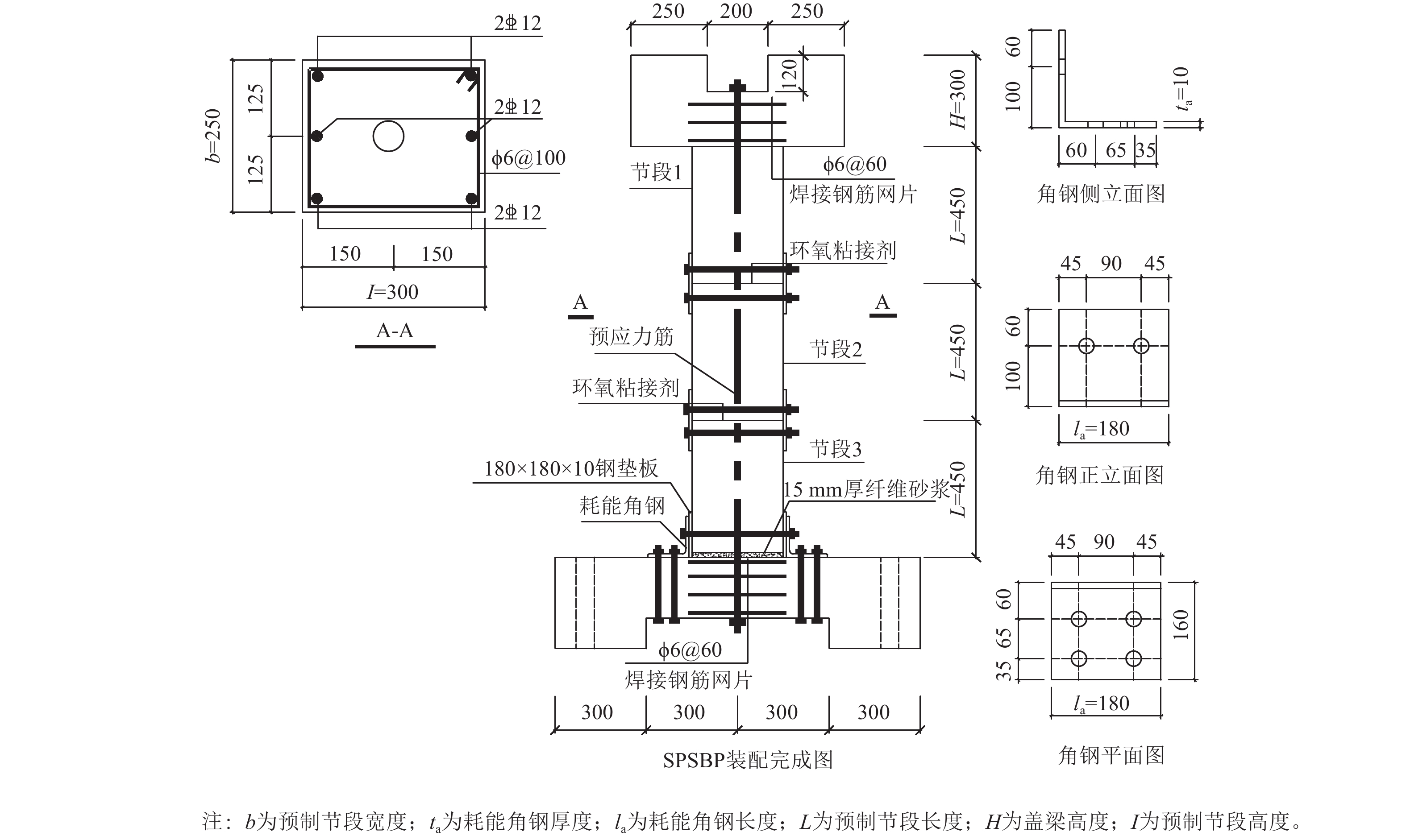
 下载:
下载:
